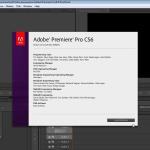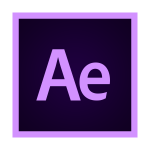Modbus Slave Emulator Overview
It is designed to help engineers and system integrators test and validate Modbus communication. This emulator supports the simulation of multiple slave devices in parallel, making it a highly versatile tool for communication protocol testing and debugging. With an easy-to-use interface, this emulator takes full advantage of your system’s GPU for smooth performance and minimal power consumption.Features of Modbus Slave Emulator
GPU Rendering for Enhanced Performance
One of the standout features of this emulator is its use of GPU rendering. This ensures a smoother user experience and reduces your computer's overall power consumption. The sleek and responsive interface ensures you can easily navigate the various options and features without experiencing any lag. The GPU rendering ensures the interface remains fluid even when dealing with multiple devices or heavy data loads.
Support for Multiple Communication Protocols
It is highly flexible, supporting several communication protocols. These include:
Modbus RTU
Modbus ASCII
Modbus TCP/IP
Modbus RTU Over TCP/IP
Modbus UDP/IP
Modbus RTU Over UDP/IP
This emulator can handle a wide range of scenarios, whether you are testing different types of industrial equipment or networking protocols. Its multi-protocol support allows you to simulate diverse environments without switching tools or software.
Monitor Communication Traffic in Real-Time
Another key feature is its ability to monitor communication traffic in real time. This functionality lets users view every data frame transmitted across the communication link. It is an invaluable tool for troubleshooting, as you can observe how devices interact and identify any issues on the fly. In addition, it supports exporting communication data to files, making it easier to analyze at a later stage.
Rich Data Type Support
The emulator supports up to 28 data formats, making it one of the most versatile tools in its class. Some of the supported formats include:
Signed and Unsigned integers
Hexadecimal
Binary
Long integers
Float and Double
String
You can easily map and annotate registers, making it more straightforward to keep track of various data points during testing. This flexibility is essential when working with complex systems or various industrial applications.
Real-Time Data Charting
If you need to visualize data trends, the emulator has you covered. It supports real-time charting, which allows you to draw charts for data from any number of registers. You can monitor trends and export images for documentation or further analysis. This feature is handy when conducting long-term testing or trying to spot patterns in communication data.
Address Translation for PLC Systems
Addressing can often be one of the trickiest aspects of Modbus communication, especially when dealing with PLC systems. This tool makes this easier by supporting translation between Modbus protocol and PLC addresses. This allows for seamless integration and debugging, regardless of the type of system or device you’re working with.
System Requirements and Technical Details
Operating System: Windows 11/10/8.1/8/7
Processor: Minimum 1 GHz Processor (2.4 GHz recommended)
RAM: 2GB (4GB or more recommended)
Free Hard Disk Space: 200MB or more is recommended










